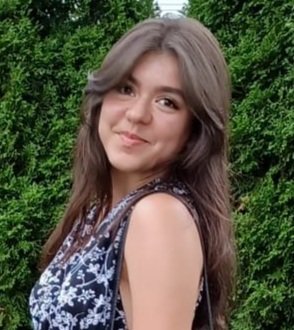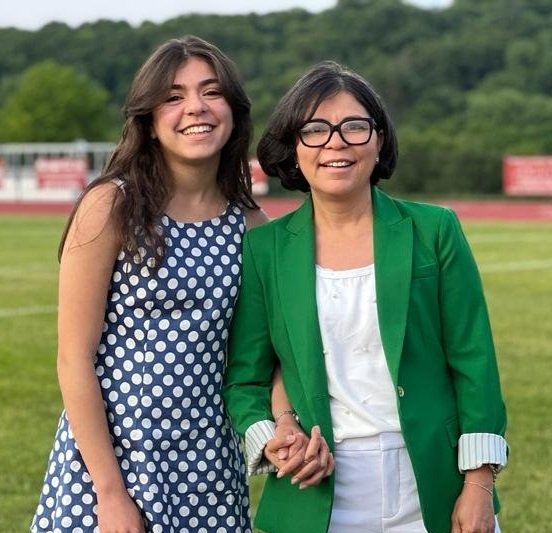Our last memorial was in 2019, only months before the onset of the Covid pandemic. So, for some of you, it may have been several years since your loved one died. For others, the death may be much more recent, and your grief is fresh and perhaps even raw.
Before registering, you may have wondered whether coming to this memorial was a good idea. Would attending today give you comfort, or would it deepen your sorrow? Or both?
I hope by the time you leave you will be glad you came, but no matter how you feel when you depart, may you leave reminded that you are not alone in your grief. May you also feel how much we care about you.
Here at Ann’s Place, we have been privileged to accompany many of you on your grief journeys, which for some began the day your loved one was diagnosed. We have witnessed, and were deeply moved by, your struggles, and are honored that you trusted us enough to share your burden with us.
In our grief we feel vulnerable, like a planet without a protective atmosphere to burn up the meteors that come its way. Everything lands hard. We may feel anxious. It can be hard to think, plan, sleep, and experience pleasure; our moments are unpredictable: We might feel fine one moment and then suddenly a trap door opens, and we fall into a well of despair or feel we are going crazy.
Over the years, some mourners have said to me, “I thought I was making progress in my grief! I was starting to feel normal, and then suddenly I was overwrought.” At such times I remind them that grief is like walking through a maze, and along the way we will have grief spasms or STUGS, sudden temporary upsurges in grief. These events are not a sign of that we are going backwards. On the contrary, they are an inevitable and necessary part of our journey.
On the other side of the coin, some mourners feel guilty and disloyal for those times when they feel okay, happy even. To them, I recall the words of Irwin Yalom: “Grief,” he said, “is like staring at the sun.” If we were unrelentingly immersed in grief, we would go blind. We need moments of respite and relief, times of distraction and fun, in order to show up for the living, to fulfill our responsibilities in life, and travel whatever distance remains until we ourselves pass away.
So, grief is wavy, unpredictable; it definitely does not unfold in nice linear stages. But there are certain tasks of grief, as William Worden reminds us: To accept the reality of the loss, to experience the pain of the loss, to adjust to living in a world without your loved one, and to find an enduring connection with the deceased while embarking on a new, meaningful life. In other words, our relationships with those who have died do not end. They continue but in a new form.
Perhaps a loss in your life came at a time when you were too overwhelmed to really feel it. We might think of numbness as the absence of grief. But looked at differently, numbness protects us from overwhelming feelings. Think of our emotions as colors. Pass all the colors of the spectrum—yellow, orange, green, blue, indigo, and violet—through a prism, and what color do you get? White. When we experience trauma, we fade to white. In such times our nervous system can handle only so much current before the fuses blow or the circuit breaker flips.
Here is the good news: Grief is patient. It will wait until you can allow it to sit next to you, for you to say hello to it, and for it to tell you its story.
Ambivalence, anger, regret, old wounds, and unfinished business can complicate the grieving process and make it wavier and more unpredictable.
“He was not easy to live with,” one mourner said to me: “I was going to divorce him, but then along came the cancer, and I decided to stay. I never thought it would be such a long ordeal, and it is hard to admit that I now feel relief, along with sadness.”
“She suffered so much,” said another. “I did my best, but there were times when I lost my patience with her, and now that is all that I think about. I can’t forgive myself.”
A loss can also trigger past trauma, including abuse and neglect from long ago. “I thought all my childhood stuff was in the past,” said one mourner to me, “but here it is again, as sharp and painful as ever.”
In order to fully grieve, it is essential that we feel safe to explore the good and the difficult. In the words of Black, feminist writer bell hooks, “only love can heal the wounds of the past.” That is why at Ann’s Place we offer bereavement counseling and Alison’s Transition group.
In his 1920s novel, Howard’s End, author E.M. Forster, offered two simple words of advice: “Only connect,” he said. We are, as Forster suggests, emotionally, spiritually, and biologically wired for connection. Relationships, all kinds, give us a sense safety, satisfaction, and allow us to bloom. Love turns our solo into a symphony.
The greater the love, and the more roles our loved one played in our lives, the greater the loss and the heartache. Many who have suffered a loss have told me that their relationship was more than the sum of its parts.
One man told me his late husband encouraged him to pursue his passions. “He gave me permission to be me,” he said. And he did the same for his husband.
Two grandparents said they seldom felt so alive as when they were with their granddaughter who died of a childhood cancer. They mourned not just her death but the spark they felt inside themselves when they were with her, along with the years together they would miss.
Love brings out a sense of safety, enjoyment, intimacy. As a grieving widow said in the Transitions group, “We just loved doing nothing together.”
“No one,” said one mourner, “cared about the ups and downs of my days as my boyfriend. Now, at the end of the day, he’s not there to care and listen.”
Another shared how much she misses “being able to bounce ideas off my dad. He was my backstop and someone who I could turn to when I had a tough decision or felt confused.”
I will never forget one man who described to me how caring for his dying wife over several years felt like a sacred duty. When she died, he said, “I not only lost the love of my life, I lost my job, my sense of purpose, my reason for being.”
One who lost her mother, father, and sister said to me: “I feel dismembered by loss. No one is alive who knew me as a child.”
Perhaps the one you mourn today gave you permission and encouragement to be you or cared about you in a way that that no other ever has. Or watched you grow up. Or was your confidante and backstop. Or helped you to feel alive or purposeful. Or in some way magnified your life. If so, what a gift! What a joy!
And what a loss!
No wonder that, in the wake of a significant loss, many people say, “a part of me died, too,” or “I feel a hole inside me.” Having once felt enlarged by love, we can feel diminished by the death of a beloved.
Meanwhile, as loss changes us, the world around us doesn’t necessarily change. People who might be good friends, but who’ve never experienced loss or who fear it, might be clueless or act insensitively. Suddenly, the world around us can feel alien. We not only lose a loved one; we might also lose the comfort and safety of the world as we knew it before they died.
During such times, we must tend to ourselves and go deeply within. We need to be gentle, to be kind, to be self-compassionate. It is important during this vulnerable time that we limit, as much as possible, our exposure to those who cannot tolerate our sadness or who are exhausting to be with. More than ever, we must surround ourselves with others who are understanding and patient. We can do this with loved ones or in a group of others facing loss. Religious faith or spiritual practice can be tremendously comforting and uplifting in such times. So, too, are the love and loyalty of our four-legged companions.
In our darkest times, when we feel diminished by loss, it is hard to trust in the transformation of grief. Like a phantom limb, we ache in the hole inside left by our loved one.
Author Paulo Coelho writes, “Never. We never lose our loved ones. They accompany us; they don’t disappear from our lives. We are merely in different rooms.”
In closing, our wish, and our hope, for each of you is that the absence inside your heart will, in the fullness of time, become a place of presence: A hearth, a nesting place for your loved one and the love you shared. May you feel those you have loved reverberating inside you, offering comfort and succor. May you hear them softly remind you of your goodness and beauty, offering insight and leading you to wise action; encouraging you to play, to savor, to pursue your passions, and to find renewed purpose; and leading you back into the stream of life.
In that spirit, I leave you from the last stanza of a poem by the late Irish poet, John O’Donohue:
Gradually, you will learn acquaintance
With the invisible form of your departed.
And when the work of grief is done,
The wound of loss will heal
And you will have learned
To wean your eyes
From that gap in the air
And be able to enter the hearth
In your soul where your loved one
Has awaited your return all the time.
















